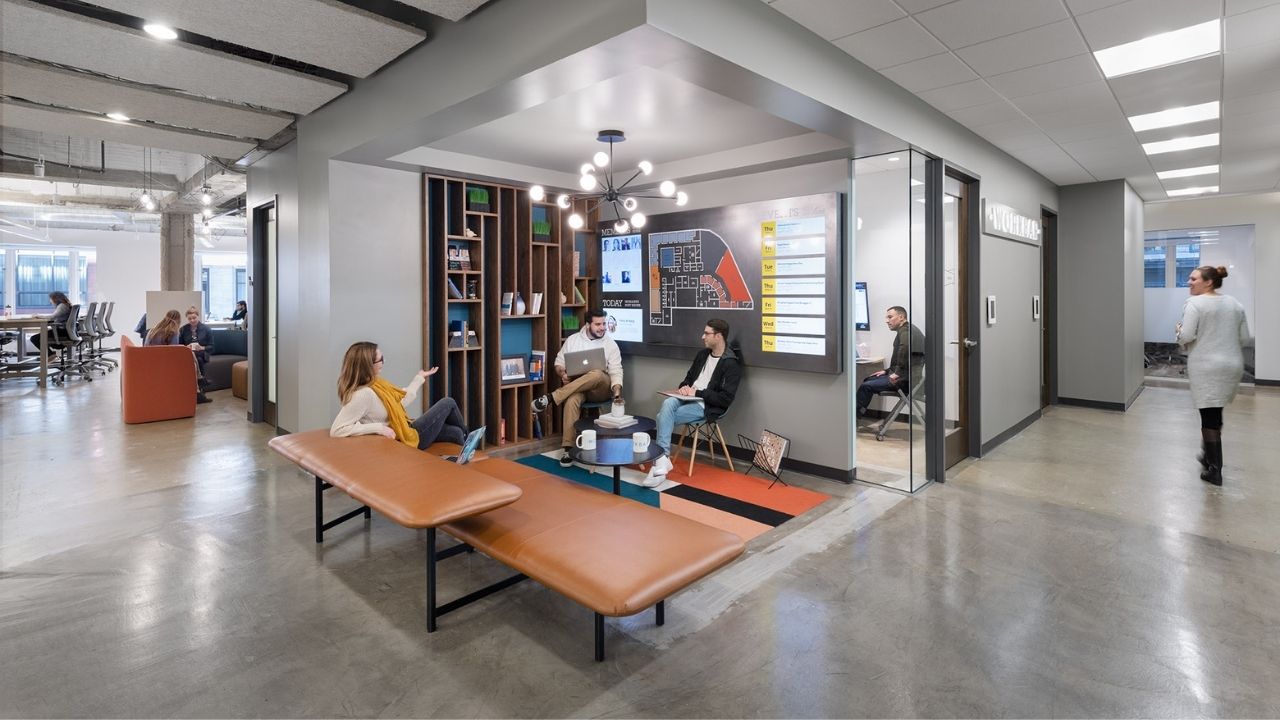Businesses are constantly looking for innovative methods to lure on and retain the best talent in the cutthroat job market nowadays. The adoption of flexible workspaces has proven among the most advantageous strategies over the past few years. Organizations have noticed the positive effects of providing their employees adaptable choices to accommodate their expectations with the alteration of traditional workplaces. The crucial role of flexible workspaces in enticing top talent is going to be explored in this blog post including its benefits or potential for boosting worker satisfaction or productivity.
Understanding Flexible Workspaces
Workplace environments providing employees an array of alternatives to ensure that they may utilize whatever best meets their requirements are frequently referred to as flexible workspaces. It might include dedicated offices, meeting rooms, distinct areas, or shared coworking spaces. The prospect of a flexible office is becoming more popularity while businesses acknowledge how crucial it is to be malleable in the fast-paced environment.
What Is Flexible Office Space?

A flexible office space is designed to accommodate either enterprises’ or employees’ fluctuating requirements. In contrast to usual office arrangements, that commonly ask for fixed layouts or long-term contracts, flexible office spaces offers the flexibility to adjust workspaces to comply with specific requirements of a team. Startups, working remotely or companies experiencing substantial growth might deem this flexibility to be highly valuable.
Benefits of Flexible Workspaces for Talent Attraction
Enhanced Work-Life Balance:
Employees with flexible workplaces frequently experience enhanced work-life balance. Highly qualified candidates find this flexibility highly appealing notably those who cherish their personal obligations as opposed to their professional ambitions.
Fostering Collaboration and Creativity:
Collaborative surroundings that promote collaboration or exchange of thoughts are prevalent in flexible workspaces. Collaborations among workers are facilitated by spacious workplaces, shared kitchens or lounge areas all of which may stimulate innovation and creativity. Cultivating a work environment which fosters collaboration can be a significant incentive for businesses seeking to hire top talent.
Increased Productivity:
Employee efficiency may improve in a workplace environment allowing for versatility. Individuals are far more inclined to feel motivated or connected if they have the freedom to select the working environment they desire. If that is a group spot for brainstorming or an isolated environment for concentrated work.
Appealing to Diverse Work Styles:
Each employee has a distinctive method of working. A flexible working space empowers enterprises to recruit an expanded spectrum of talent by embracing various tastes.
Types of Flexible Workspaces

Businesses will discover an abundance of options that accommodate their objectives as they explore the perks of flexible workplace. Several common kinds of flexible workspaces are outlined below:
Coworking Spaces
Coworking spaces are becoming incredibly popular particularly in urban areas like Thousand Oaks. Individuals from numerous sectors may utilize an office space in such environments or profit from collaboration or professional development. They offer a variety of subscription levels enabling individuals to determine how often they prefer to utilize the workspace.
Shared Offices
Shared offices provide private office setups that multiple companies can occupy simultaneously. Businesses may expand or collapse without getting bound into an extended lease. For entrepreneurs wanting to become renowned despite requiring significant financial dedication it’s an ideal option.
Dedicated Desks
For those who prefer a stable workspace without the commitment of a private office, dedicated desks in flexible office spaces are an ideal solution. While retaining accessibility to the advantages of a collaborative office, individuals may reserve a dedicated workspace for themselves. Businesses seeking an appropriate equilibrium between certainty or adaptability could think about this approach.
Choosing the Right Flexible Workspace
When selecting a flexible workspace, businesses must consider several factors to ensure they choose the right option for their teams:
Location
The location of a flexible workspace is vital for bringing in potential. Job satisfaction can be greatly impacted by proximity to amenities, lively areas or public transportation.
Amenities
Consider the amenities offered by the workspace. Recess spaces, conference rooms, and fast internet facilities can enhance the overall experience for employees and contribute to their productivity.
The Future of Flexible Workspaces
The idea of flexible workspaces will probably continue to evolve as the requirement for flexibility in work environments rises. Businesses are recognizing that for them to remain profitable, they must establish a flexible bureau that will adapt to the fluctuating expectations of its employees.
Conclusion
In conclusion, it is tough to exaggerate the significance of flexible workspace in attracting top talent. Companies can significantly boost employee satisfaction yet productivity by offering a flexible yet warm atmosphere. In today’s contemporary workplace culture, flexible workspaces—whether in the sense of dedicated desks, shared offices, or coworking spaces—are significant. Businesses may differentiate themselves as desired workers while establishing favorable circumstances for long-term success in the dynamic business environment by placing a flexible office strategy.




